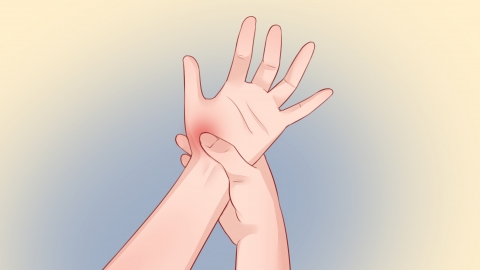How to treat tenosynovitis of the thumb
Generally, the treatment methods for thumb tenosynovitis mainly include immobilization and protection, physical relief, medication, traditional Chinese medicine (TCM) therapy, and surgical treatment. The details are as follows:
1. Immobilization and Protection
Reduce thumb movement and avoid frequent flexion, extension, or forceful gripping actions—such as prolonged smartphone use or twisting bottle caps—to prevent repeated friction between the tendon and tendon sheath that can worsen inflammation. Wearing a thumb-specific brace or elastic bandage can help immobilize the thumb in a slightly bent, relaxed position, creating favorable conditions for reducing tendon sheath inflammation and alleviating pain and swelling.
2. Physical Relief
Mild therapies can be used to reduce local inflammation, such as warm water soaks and low-frequency electrical stimulation. Soaking the affected thumb in warm water at 38–40°C for 15–20 minutes per session helps improve local blood circulation, relaxes tight tendons and tendon sheaths, and relieves pain. Low-frequency electrical therapy stimulates local nerves and muscles, promotes absorption of inflammatory substances, reduces tendon sheath edema, and accelerates healing of damaged tissues.

3. Medication
Medications should be used under medical supervision. Commonly used drugs include flurbiprofen gel patches, naproxen tablets, and compound betamethasone injection. Flurbiprofen gel patches are applied topically directly on the affected area to reduce local inflammation. Oral naproxen helps relieve pain. Compound betamethasone injection may be used for local infiltration (closed injection) to rapidly control severe inflammation and improve thumb mobility.
4. Traditional Chinese Medicine (TCM) Therapy
According to TCM, thumb tenosynovitis is associated with overuse injury, blood stasis, and invasion by cold-dampness. Treatment focuses on promoting blood circulation, removing blood stasis, unblocking meridians, and relieving pain. Commonly used herbal medicines include Shujin Huoluo Pills and Yunnan Baiyao capsules. Acupuncture at points such as Hegu (LI4) and Yuji (LU10) helps unblock meridians, regulate qi and blood flow, reduce tendon tension, and alleviate thumb pain and restricted movement. Massage techniques like tuina may also be applied gently to the affected area to promote local circulation of qi and blood.
5. Surgical Treatment
For severe cases where conservative treatments are ineffective or when symptoms such as catching, locking, or snapping during thumb flexion and extension occur, surgical intervention—specifically, thumb flexor tendon sheath release—is required. This procedure involves cutting open the thickened tendon sheath to relieve constriction on the tendon and restore normal gliding function. After surgery, patients should perform guided thumb flexion and extension exercises under medical supervision to prevent tendon adhesions.
In addition, patients should follow medical advice for proper care during treatment, attend regular follow-up visits, and adjust their treatment plans according to recovery progress. If symptoms such as worsening thumb pain or severely limited movement occur, prompt medical attention is necessary to prevent further impact on daily hand function.




